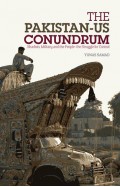- Home
- Categories
- Non Fiction
- History
- Lost Enlightenment: Central Asia's Golden Age from the Arab Conquest to Tamerlane
Lost Enlightenment: Central Asia's Golden Age from the Arab Conquest to Tamerlane
By: S. Frederick Starr
-
Rs 5,945.75
- Rs 6,995.00
- 15%
You save Rs 1,049.25.
Due to constant currency fluctuation, prices are subject to change with or without notice.
In this sweeping and richly illustrated history, S. Frederick Starr tells the fascinating but largely unknown story of Central Asia's medieval enlightenment through the eventful lives and astonishing accomplishments of its greatest minds--remarkable figures who built a bridge to the modern world. Because nearly all of these figures wrote in Arabic, they were long assumed to have been Arabs. In fact, they were from Central Asia--drawn from the Persianate and Turkic peoples of a region that today extends from Kazakhstan southward through Afghanistan, and from the easternmost province of Iran through Xinjiang, China. Lost Enlightenment recounts how, between the years 800 and 1200, Central Asia led the world in trade and economic development, the size and sophistication of its cities, the refinement of its arts, and, above all, in the advancement of knowledge in many fields. Central Asians achieved signal breakthroughs in astronomy, mathematics, geology, medicine, chemistry, music, social science, philosophy, and theology, among other subjects. They gave algebra its name, calculated the earth's diameter with unprecedented precision, wrote the books that later defined European medicine, and penned some of the world's greatest poetry. One scholar, working in Afghanistan, even predicted the existence of North and South America--five centuries before Columbus. Rarely in history has a more impressive group of polymaths appeared at one place and time. No wonder that their writings influenced European culture from the time of St. Thomas Aquinas down to the scientific revolution, and had a similarly deep impact in India and much of Asia. Lost Enlightenment chronicles this forgotten age of achievement, seeks to explain its rise, and explores the competing theories about the cause of its eventual demise. Informed by the latest scholarship yet written in a lively and accessible style, this is a book that will surprise general readers and specialists alike.
In this sweeping and richly illustrated history, S. Frederick Starr tells the fascinating but largely unknown story of Central Asia's medieval enlightenment through the eventful lives and astonishing accomplishments of its greatest minds--remarkable figures who built a bridge to the modern world. Because nearly all of these figures wrote in Arabic, they were long assumed to have been Arabs. In fact, they were from Central Asia--drawn from the Persianate and Turkic peoples of a region that today extends from Kazakhstan southward through Afghanistan, and from the easternmost province of Iran through Xinjiang, China. Lost Enlightenment recounts how, between the years 800 and 1200, Central Asia led the world in trade and economic development, the size and sophistication of its cities, the refinement of its arts, and, above all, in the advancement of knowledge in many fields. Central Asians achieved signal breakthroughs in astronomy, mathematics, geology, medicine, chemistry, music, social science, philosophy, and theology, among other subjects. They gave algebra its name, calculated the earth's diameter with unprecedented precision, wrote the books that later defined European medicine, and penned some of the world's greatest poetry. One scholar, working in Afghanistan, even predicted the existence of North and South America--five centuries before Columbus. Rarely in history has a more impressive group of polymaths appeared at one place and time. No wonder that their writings influenced European culture from the time of St. Thomas Aquinas down to the scientific revolution, and had a similarly deep impact in India and much of Asia. Lost Enlightenment chronicles this forgotten age of achievement, seeks to explain its rise, and explores the competing theories about the cause of its eventual demise. Informed by the latest scholarship yet written in a lively and accessible style, this is a book that will surprise general readers and specialists alike.
Lost Enlightenment: Central Asia's Golden Age from the Arab Conquest to Tamerlane
By: S. Frederick Starr
Rs 5,945.75 Rs 6,995.00 Ex Tax :Rs 5,945.75
Zubin Mehta: A Musical Journey (An Authorized Biography)
By: VOID - Bakhtiar K. Dadabhoy
Rs 892.50 Rs 1,050.00 Ex Tax :Rs 892.50
Mindware: Tools for Smart Thinking Paperback
By: Richard E. Nisbett
Rs 2,290.75 Rs 2,695.00 Ex Tax :Rs 2,290.75
Algorithms to Live By: The Computer Science of Human Decisions
By: Brian Christian
Rs 2,245.50 Rs 2,495.00 Ex Tax :Rs 2,245.50
After Tamerlane: The Rise and Fall of Global Empires, 1400-2000
By: John Darwin
Rs 3,145.50 Rs 3,495.00 Ex Tax :Rs 3,145.50
The Origins of Political Order From Prehuman Times to the French RevolutioN
By: Francis Fukuyama
Rs 4,045.50 Rs 4,495.00 Ex Tax :Rs 4,045.50
Manning Up: How the Rise of Women Has Turned Men into Boys
By: Kay Hymowitz
Rs 845.75 Rs 995.00 Ex Tax :Rs 845.75
The Obama Syndrome: Surrender At Home War Abroad
By: Tariq Ali
Rs 1,100.75 Rs 1,295.00 Ex Tax :Rs 1,100.75
The Quest For Meaning: Developing A Philosophy Of Pluralism
By: Tariq Ramadan
Rs 1,185.75 Rs 1,395.00 Ex Tax :Rs 1,185.75
The Pakistan US Conundrum Jihadists The Military And The People The Struggle For Control
By: Yunas Samad
Rs 1,185.75 Rs 1,395.00 Ex Tax :Rs 1,185.75
An Enemy We Created: The Myth Of The Taliban Al Qaeda Merger In Afghanistan 19702010
By: Alex Strick van Linschoten
Rs 4,197.50 Rs 8,395.00 Ex Tax :Rs 4,197.50
WikiLeaks: Inside Julian Assanges War on Secrecy
By: David Leigh & Luke Harding
Rs 637.50 Rs 850.00 Ex Tax :Rs 637.50
Mindware: Tools for Smart Thinking Paperback
By: Richard E. Nisbett
Rs 2,290.75 Rs 2,695.00 Ex Tax :Rs 2,290.75
Algorithms to Live By: The Computer Science of Human Decisions
By: Brian Christian
Rs 2,245.50 Rs 2,495.00 Ex Tax :Rs 2,245.50
After Tamerlane: The Rise and Fall of Global Empires, 1400-2000
By: John Darwin
Rs 3,145.50 Rs 3,495.00 Ex Tax :Rs 3,145.50
No recently viewed books available at the moment.
Zubin Mehta: A Musical Journey (An Authorized Biography)
By: VOID - Bakhtiar K. Dadabhoy
Rs 892.50 Rs 1,050.00 Ex Tax :Rs 892.50
Lost Enlightenment: Central Asia's Golden Age from the Arab Conquest to Tamerlane
By: S. Frederick Starr
Rs 5,945.75 Rs 6,995.00 Ex Tax :Rs 5,945.75
Mindware: Tools for Smart Thinking Paperback
By: Richard E. Nisbett
Rs 2,290.75 Rs 2,695.00 Ex Tax :Rs 2,290.75
Algorithms to Live By: The Computer Science of Human Decisions
By: Brian Christian
Rs 2,245.50 Rs 2,495.00 Ex Tax :Rs 2,245.50
After Tamerlane: The Rise and Fall of Global Empires, 1400-2000
By: John Darwin
Rs 3,145.50 Rs 3,495.00 Ex Tax :Rs 3,145.50












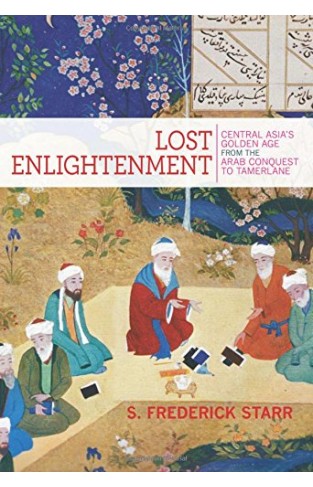
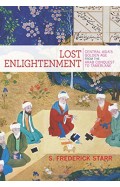
-120x187.jpg?q6)





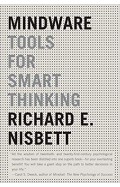
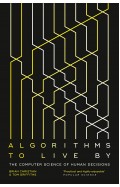
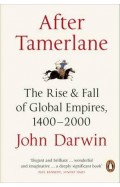
-120x187.jpg?q6)



-120x187.jpg?q6)
